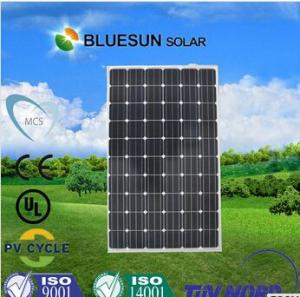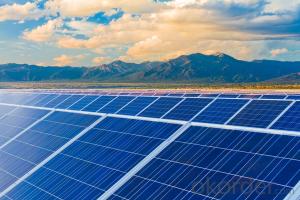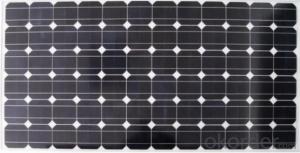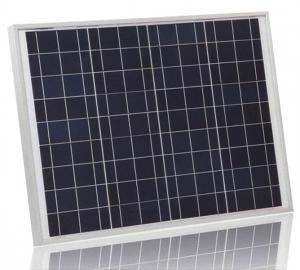Iowa Solar Panels - Solar Polycrystalline 156mm Series (3w-10w)
- Loading Port:
- Shanghai
- Payment Terms:
- TT OR LC
- Min Order Qty:
- 1000 watt
- Supply Capability:
- 20000000 watt/month
OKorder Service Pledge
OKorder Financial Service
You Might Also Like
Specification
1.Structure of Solar Module Description
Solar Polycrystalline 156mm Series (3W-----10W)
The making craft of polycrystalline silicon solar panels with monocrystalline silicon solar panels is similar, but the photoelectric conversion efficiency of polycrystalline silicon solar panels to reduce a lot, the photoelectric conversion efficiency is about 12% (on July 1, 2004, Japan's sharp market efficiency for 14.8% of the world's highest efficiency of polycrystalline silicon solar panels). In terms of production cost is cheaper than monocrystalline silicon solar panels, material is simple, save power consumption, the total production cost is low, so get a lot of development. In addition, the service life of the polycrystalline silicon solar panels is shorter than monocrystalline silicon solar panels. As for the price performance ratio, monocrystalline silicon solar panels is slightly better.
2.Characteristics of the Solar Module
| Max Power Voltage Vmp (V) | 9.5 | 9.6 | 17.2 |
| Max Power Current Imp (A) | 0.32 | 0.52 | 0.58 |
| Open Circuit Voltage Voc (V) | 12 | 12.1 | 21.8 |
| Short Circuit Current Isc (A) | 0.35 | 0.58 | 0.65 |
| Max Power Pm(W) | 3 | 5 | 10 |
3.Limits of the Solar Module
Operating Temperature ﹣40℃to+85℃
Storage Temperature ﹣40℃to+85℃
Max System Voltage 700V
4.Specifications of the Solar Module
| Power | 3W | 5W | 10W |
| Dimension | 250x180x18mm | 250x250x18mm | 350x290x18mm |
| Weight | 0.8kg | 0.9kg | 1.3kg |
| Tolerance | ±3% | ±3% | ±3% |
Certificate | TUV VDE UL ISO IEC |
The dimension of the modules can be changed according to the demand of clients
5.Applications of the Solar Module
1.Electricity
2.Heat energy
6.IMages of the Solar Module



FAQ
1. Q: Do you have your own factory?
A: Yes, we have. Our factory located in Jiangyin city, jiangsu province.
2. Q: How can I visit your factory?
A: Before you take off from your country, please let us know. We will show you the way,or arrange time to pick you up if possible.
3. Q: Do you provide free sample?
A: Usually we do not offer free sample
4. Q: Could you print our company LOGO on the nameplate and package?
A: Yes, we can do that.
- Q: Didnt solar panels use to cost around $250,000 5 years ago?
- I okorder to register for free and lock in long term costs. The increasing demand and competition is helping reduce costs.
- Q: I'm trying to charge rechargeable AA batteries with a solar panel. What guage wire should I use to connect the panel to the batteries? Should I use a diode to keep the batteries from overpowering the circuit? If so, what size? My panel is 4.8V 50mA.
- How photograph voltaic Cells artwork via Scott Aldous interior this text a million. advent to How photograph voltaic Cells artwork 2. Photovoltaic Cells: changing Photons to Electrons 3. How Silicon Makes a photo voltaic cellular 4. Anatomy of a photo voltaic cellular 5. power Loss in a photo voltaic cellular 6. photograph voltaic-powering a house 7. fixing photograph voltaic-power subjects 8. photograph voltaic-power experts and Cons 9. so a lot greater coaching 0. See all actual technological understanding articles you have probably seen calculators that have photograph voltaic cells -- calculators that for the period of no way decide for batteries, and specially circumstances do no longer even have an off button. as long as you have sufficient easy, they seem to artwork invariably. you need to have seen larger photograph voltaic panels -- on emergency highway signs and warning signs or call bins, on buoys, even in parking a lot to power lighting fixtures furniture. in spite of the undeniable fact that those larger panels are not as common as photograph voltaic powered calculators, they're accessible, and not that troublesome to locate in case you comprehend the place to look. There are photograph voltaic cellular arrays on satellites, the place they're used to power the electrical powered structures. you have probably additionally been listening to with reference to the photograph voltaic revolution for the final 2 many years -- the theory sooner or later we can all use loose electrical energy from the sunlight. this could nicely be a seductive promise: On a marvelous, sunny day, the sunlight shines approximately a million,000 watts of power in line with sq. meter of the planet's floor, and if we ought to deliver jointly all of that power we ought to actual power our homes and places of work for loose.
- Q: Can solar panels be installed on a hospital or healthcare facility?
- Yes, solar panels can be installed on a hospital or healthcare facility. In fact, many healthcare facilities are increasingly adopting solar energy as a sustainable and cost-effective solution to meet their electricity needs. Solar panels can be installed on rooftops, parking lots, or open land adjacent to the facility, providing clean and renewable energy that can help reduce electricity costs and carbon emissions. Additionally, solar installations can contribute to the facility's green image and commitment to environmental sustainability.
- Q: What are the maintenance requirements for solar panels?
- The maintenance requirements for solar panels typically involve regular cleaning to remove dirt and debris, as well as ensuring that they are not shaded by nearby trees or structures. Additionally, occasional inspections for any signs of damage or malfunction are recommended, and if necessary, repairs or replacements may need to be carried out by a professional. Overall, solar panels are known for their low maintenance needs, making them a cost-effective and sustainable energy solution.
- Q: How do solar panels affect the property's sustainable development goals?
- Solar panels can have a positive impact on a property's sustainable development goals by reducing the reliance on non-renewable energy sources and decreasing carbon emissions. They provide a clean and renewable energy source, contributing to the property's overall sustainability and helping to achieve goals related to energy efficiency and environmental conservation.
- Q: Polycrystalline solar panels are good or single crystal solar energy is good
- . Since monocrystalline silicon is typically coated with tempered glass and waterproof resin, it is rugged and durable for up to 15 years and up to 25 years.
- Q: Can solar panels be installed on historical landmarks?
- Yes, solar panels can be installed on historical landmarks. However, the installation process needs to be carefully planned and executed to ensure that the historical integrity and aesthetics of the landmark are preserved.
- Q: If this was sold back to the grids what would be the profit i would stand to make per day on energy received in these panels? How did you come up with this answer?
- This question is too generalized to answer. Are you australia? If so ergon buys the power back at 45cents a KWH which is 3 times what they sell it for.(this is guaranteed for 20years) We have a 2.4kw system and it will take approx 5years to pay itself off. Once carbon trading is in full swing electricity costs are going to go up by 40%, then obviously it will take approx half the time.
- Q: Can solar panels be installed on backpacks or camping gear?
- Yes, solar panels can be installed on backpacks or camping gear. There are portable and lightweight solar panels specifically designed for outdoor activities that can be easily attached to backpacks or other camping gear. These panels can help generate renewable energy to charge devices or power small electronic devices while on the go.
- Q: i really need to know howbecause im building a solar powered car for science fair :]thank you!
- Hehe, if you want to build your own solar panel that looks like what you see on buildings, etc, you will probably need to be a multi-millionaire. Here is a quote from the first link in my sources list: The high-efficiency solar cells you can buy at Radio Shack and other stores are made from highly processed silicon, and require huge factories, high temperatures, vacuum equipment, and lots of money. But fortunately for you, there is a cheap way to make a solar panel yourself (see first link). I love the scitoys website, but I am not quite familiar with this particular experiment. It looks like a science fair project in itself! It also doesn't appear to put out nearly enough power to run even a small solar car. What I would recommend is buying a compact solar panel from Radio Shack or some other electronics store that you may know of. Type in solar in to the Radio Shack search box. The first item on the list may be useful to you (the solar panel battery combo). I am just guessing, though, since I don't know any of your requirements (voltage output, power output, size, etc). Also, buyer beware. This particular product has a pretty bad customer review... but then again, I find that people are more inclined to leave a bad review than a good one. Good luck... -Ubi
Send your message to us
Iowa Solar Panels - Solar Polycrystalline 156mm Series (3w-10w)
- Loading Port:
- Shanghai
- Payment Terms:
- TT OR LC
- Min Order Qty:
- 1000 watt
- Supply Capability:
- 20000000 watt/month
OKorder Service Pledge
OKorder Financial Service
Similar products
Hot products
Hot Searches
Related keywords


































